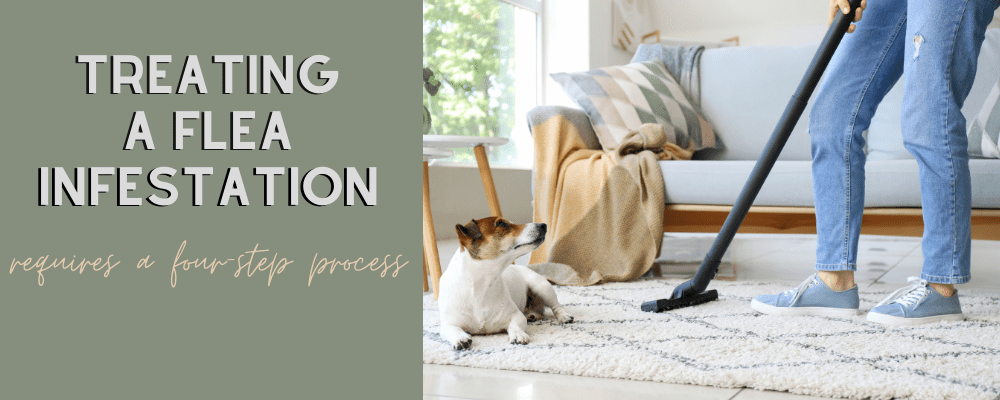Getting rid of fleas is a difficult process due to the long lifecycle of a flea. Moderate to severe infestations will take months to control and require a four-step process for complete elimination:
Sanitation. Thoroughly clean areas where fleas frequently breed. This includes washing bedding, rugs, and pet bedding, and thoroughly vacuuming and sweeping floors and carpeted areas and along the edges of walls.
Pet treatment. Every pet in the home must be treated. Yes, even indoor only pets. You might want to start with a flea shampoo, or comb them with a flea comb. Pay careful attention to face and neck regions, and the area in front of the tail. Follow this up with a product that will give more long-term protection. Talk to your veterinarian about choosing the right flea control product for your pet. If your pet is really itchy, or has sores on its skin, then it will need medication for that as well.
Home and yard treatment. Begin home treatment at the same time as pet treatment. This keeps all treatment on the same timeline and helps disrupt the flea life cycle. A licensed commercial pest control applicator can help you determine which products are best for inside your home and in the yard. If professional pest control is not an option, we have effective sprays that you can use in the house and yard. Focus outdoor treatment on shady areas and places where pets spend the most amount of time.
Follow-up. Fleas have a complex life cycle. At some stages of their life cycle they are resistant to insecticides and other flea control products. In order to get rid of fleas in all stages of the life cycle, two or more follow-up house and yard treatments at 14 day intervals after the first application are needed. Additionally, vacuuming, sanitation and pet flea prevention practices should be ongoing throughout this period to pick up all remaining eggs and juvenile fleas.
